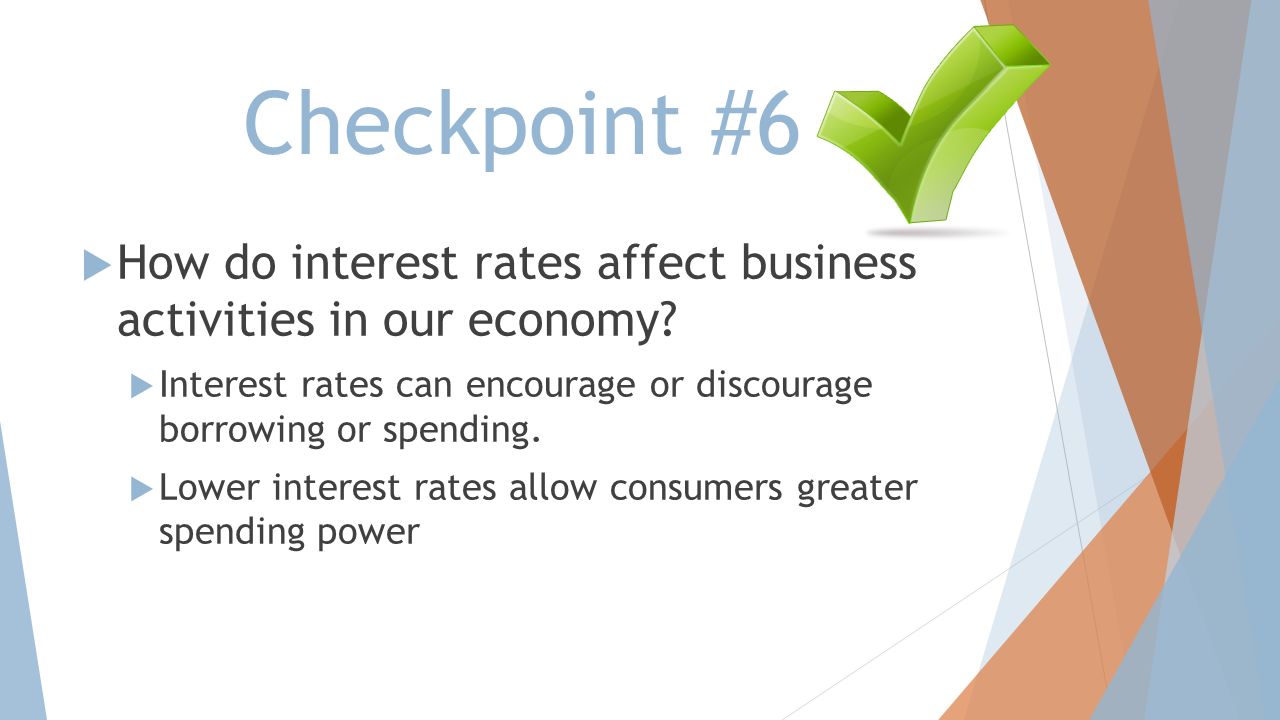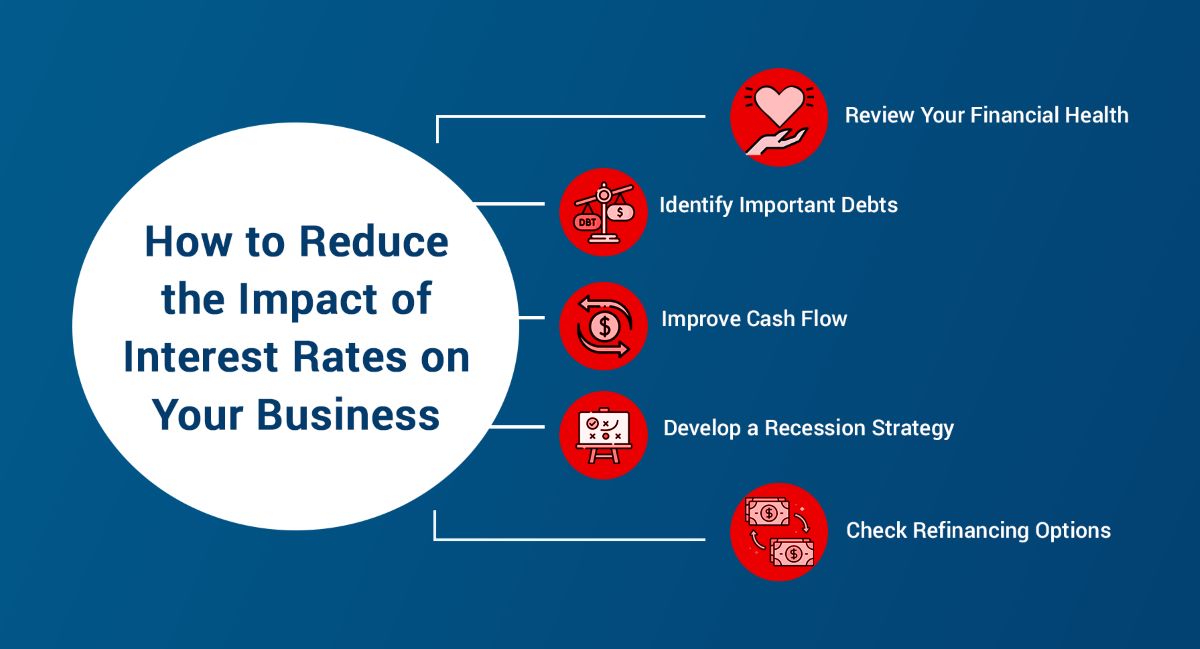

Finance
How Do Interest Rates Affect Employment?
Published: November 1, 2023
Learn how interest rates in the finance sector impact employment and find out why they play a vital role in shaping the job market.
(Many of the links in this article redirect to a specific reviewed product. Your purchase of these products through affiliate links helps to generate commission for LiveWell, at no extra cost. Learn more)
Table of Contents
- Introduction
- The Relationship between Interest Rates and Employment
- Effect of Lower Interest Rates on Employment
- Effect of Higher Interest Rates on Employment
- Impact of Monetary Policy on Employment
- Factors Influencing the Relationship between Interest Rates and Employment
- Case Studies: Interest Rates and Employment
- Conclusion
Introduction
The relationship between interest rates and employment is a topic of great interest in the field of finance. Interest rates, set by central banks, have a significant impact on various aspects of the economy, including employment levels. Understanding this relationship is crucial for policymakers, investors, and individuals alike.
Interest rates can be defined as the cost of borrowing money or the return on savings. When interest rates are low, it becomes cheaper and more accessible for businesses and individuals to borrow money. This influx of credit stimulates economic activity, leading to increased investment and job creation.
On the other hand, high interest rates raise the cost of borrowing, making it more expensive for businesses to invest or expand. This can lead to a decrease in economic activity and a slowdown in job growth or even job losses.
In this article, we will explore the relationship between interest rates and employment in more detail. We will examine how lower interest rates can affect employment levels and discuss the potential consequences of higher interest rates on employment. Additionally, we will delve into the impact of monetary policy on employment and explore the various factors that influence the relationship between interest rates and employment.
Finally, we will examine real-world case studies that illustrate the interplay between interest rates and employment. By understanding these dynamics, we can gain insights into the complexities of this relationship and its implications for the broader economy.
The Relationship between Interest Rates and Employment
The relationship between interest rates and employment is a complex and intertwined one. Changes in interest rates can have a profound impact on the level of employment in an economy. Understanding this relationship is crucial for policymakers and economists in order to effectively manage monetary policy and support job creation.
Lower interest rates generally stimulate economic activity, which can lead to increased employment. When interest rates are low, borrowing costs decrease, making it more affordable for businesses to invest in projects, expand operations, and hire more employees. This increased investment and job creation can help to stimulate economic growth and improve overall employment levels.
Conversely, higher interest rates tend to have a dampening effect on employment. When borrowing costs are high, businesses may be deterred from making new investments or expanding their operations. This can lead to a slowdown in economic activity and potentially result in job losses.
It’s important to note that the relationship between interest rates and employment is not always straightforward and can be influenced by various factors. For example, the impact of interest rates on employment may be more pronounced in certain sectors of the economy, such as construction or manufacturing, compared to others.
Additionally, the time lag between changes in interest rates and their effect on employment can vary. It may take several months or even years for changes in interest rates to fully manifest in the labor market. This is because businesses need time to adjust their investment and hiring plans in response to changes in borrowing costs.
Furthermore, other economic factors, such as consumer spending, business confidence, and government policies, can also affect employment levels and may interact with changes in interest rates. For example, if consumer spending is weak, businesses may be hesitant to invest and hire regardless of low interest rates.
In summary, the relationship between interest rates and employment is nuanced and influenced by a variety of factors. While lower interest rates generally stimulate job creation and economic growth, higher interest rates can have a dampening effect on employment. Understanding the intricacies of this relationship is essential for policymakers and economists to effectively manage monetary policy and support sustainable employment growth.
Effect of Lower Interest Rates on Employment
Lower interest rates can have a significant impact on employment levels by stimulating economic activity and promoting job creation. When interest rates are low, it becomes more affordable for businesses to borrow money, which encourages investment and expansion.
One of the key ways that lower interest rates can spur employment is through increased business investment. With lower borrowing costs, businesses are more inclined to take on new projects, upgrade their facilities, or expand their operations. This, in turn, creates a demand for labor and can lead to the creation of new jobs.
Lower interest rates also make it more attractive for individuals to borrow money, such as taking out mortgages or financing their education. This increased borrowing capacity can lead to a higher demand for housing, which supports employment in the construction industry, and can contribute to the growth of other sectors as well.
Furthermore, lower interest rates can stimulate consumer spending, which can have a positive impact on employment. When borrowing costs are low, consumers are more likely to make large purchases, such as buying a car or investing in home improvements. This increased consumer spending can drive demand for goods and services, resulting in increased production and employment opportunities.
Additionally, lower interest rates can have a positive spillover effect on the stock market. When interest rates are low, investors may seek higher returns in the stock market, leading to increased investment in companies. This can boost stock prices and improve the financial health of businesses, potentially resulting in increased job creation.
It’s important to note that the impact of lower interest rates on employment may not be immediate. There is often a time lag between changes in interest rates and their effect on the labor market, as businesses need time to adjust their investment and hiring plans. However, over time, the stimulative effect of lower interest rates can lead to increased employment levels.
In summary, lower interest rates can have a positive effect on employment by stimulating business investment, increasing consumer spending, and boosting stock market activity. By reducing borrowing costs, lower interest rates create an environment conducive to economic growth and job creation.
Effect of Higher Interest Rates on Employment
Higher interest rates can have a dampening effect on employment by increasing borrowing costs for businesses and individuals. When interest rates rise, it becomes more expensive to borrow money, which can discourage investment and curtail economic activity.
One of the primary ways in which higher interest rates can impact employment is through reduced business investment. With higher borrowing costs, businesses may be more hesitant to take on new projects or expand their operations. The increased cost of capital can make investment projects less financially viable, leading to a decrease in business spending and job creation.
Higher interest rates can also affect consumer behavior and spending patterns. When borrowing costs increase, it becomes more expensive for individuals to take out loans for major purchases or investments. This can result in reduced consumer spending, which can negatively impact businesses and lead to a decrease in employment opportunities.
In addition, higher interest rates can have a negative impact on the housing market. With higher borrowing costs, potential homebuyers may be deterred from purchasing properties, leading to a decrease in demand for housing and a slowdown in the construction industry. This can result in a decline in construction-related jobs and dampen employment growth in this sector.
Moreover, higher interest rates can lead to a decrease in business and consumer confidence. When borrowing costs are high, businesses may be more cautious about future economic conditions and may delay hiring or investment plans. Similarly, consumers may become more conservative in their spending and postpone large purchases, leading to a decrease in economic activity and potential job losses.
It’s important to note that the impact of higher interest rates on employment may not be immediate and can vary depending on the specific economic circumstances. Businesses and individuals might need time to adjust their financial plans and investment strategies in response to higher borrowing costs.
In summary, higher interest rates can have a detrimental effect on employment by increasing borrowing costs, discouraging business investment, reducing consumer spending, and negatively impacting the housing market. The higher cost of capital can impede economic growth and job creation, making it essential for policymakers to carefully consider the potential consequences of raising interest rates.
Impact of Monetary Policy on Employment
Monetary policy, managed by central banks, plays a crucial role in influencing employment levels. Central banks adjust monetary policy primarily by manipulating interest rates to achieve specific economic objectives, including promoting employment growth.
One of the main tools used in monetary policy is the adjustment of the benchmark interest rate, also known as the policy rate. By raising or lowering the policy rate, central banks aim to control borrowing costs and thereby impact economic activity and employment levels.
When the economy is facing a slowdown or recession, central banks often employ expansionary monetary policy. This typically involves lowering interest rates to stimulate borrowing and investment, which encourages businesses to expand and hire more workers. By reducing borrowing costs, central banks aim to boost economic activity and support job creation.
Conversely, during periods of high inflation or when the economy is overheating, central banks may adopt contractionary monetary policy. This involves raising interest rates to curb borrowing and investment and limit inflationary pressures. While this can help control inflation, it can also have the unintended consequence of reducing employment as businesses face higher costs of borrowing and may decrease investment and hiring.
In addition to adjusting interest rates, central banks also use other tools to influence employment. These include open market operations, where central banks buy or sell government bonds to inject or withdraw money from the economy, and reserve requirements, which determine the amount of capital that banks must hold in reserves.
Central banks not only consider employment levels when making monetary policy decisions but also take into account other economic indicators such as inflation, GDP growth, and financial stability. The goal is to strike a balance between promoting employment and maintaining price stability and overall economic health.
It’s important to note, however, that monetary policy is one piece of the puzzle in influencing employment. Other factors, such as fiscal policy, government regulations, technological advancements, and global economic conditions, also play a significant role in shaping employment trends.
In summary, the impact of monetary policy on employment is significant. Central banks use various tools, including interest rate adjustments, to influence borrowing costs and stimulate or cool down economic activity. By managing monetary policy effectively, central banks can help support employment growth and economic stability.
Factors Influencing the Relationship between Interest Rates and Employment
The relationship between interest rates and employment is multifaceted and can be influenced by various factors. Understanding these factors is crucial for policymakers and economists to accurately assess the impact of interest rate changes on employment levels. Here are some key factors that can influence this relationship:
- Economic Conditions: The overall state of the economy plays a significant role in how interest rate changes affect employment. In times of economic expansion, lower interest rates can further stimulate investment and job creation. However, in times of economic downturn or uncertainty, the impact of interest rate changes on employment may be less pronounced as businesses and individuals may be cautious about borrowing and spending.
- Business Confidence: The sentiment and confidence of businesses can impact their response to changes in interest rates. If businesses are optimistic about future economic conditions, lower interest rates can incentivize them to invest, expand, and hire more employees. Conversely, if businesses are skeptical or uncertain, they may be more cautious in their investment and hiring decisions, reducing the impact of interest rate changes on employment.
- Government Policies: Government policies, such as fiscal stimulus or regulatory measures, can interact with changes in interest rates and influence employment levels. For example, if the government implements tax incentives or infrastructure spending alongside lower interest rates, the combined effect may lead to a more significant boost in employment.
- Global Economic Factors: The global economic landscape can also impact the relationship between interest rates and employment. Factors such as international trade dynamics, exchange rates, and global financial conditions can influence the competitiveness of domestic businesses and their ability to create jobs, potentially mitigating or enhancing the effects of interest rate changes.
- Industry-specific Factors: Different industries may respond differently to changes in interest rates. For example, sectors that are more capital-intensive, such as manufacturing or infrastructure, may be more sensitive to interest rate fluctuations compared to service-based industries. Understanding the composition of the economy and the relative importance of different sectors can help gauge the overall impact of interest rate changes on employment.
It’s important to recognize that the interplay of these factors is complex and can vary across different economic contexts. The specific combination and timing of these factors can shape the overall impact of interest rate changes on employment levels. By considering these factors, policymakers can make more informed decisions to support employment growth and sustain economic stability.
Case Studies: Interest Rates and Employment
Examining real-world case studies provides valuable insights into the relationship between interest rates and employment. While the specific outcomes can vary, these examples highlight some of the dynamics at play:
- United States (2008 Financial Crisis): The 2008 financial crisis serves as a significant case study in understanding the impact of interest rates on employment. In response to the crisis, the Federal Reserve aggressively lowered interest rates to stimulate economic activity and prevent a deeper recession. These lower rates helped stabilize financial markets and encouraged borrowing, leading to increased investment and a gradual recovery in employment levels.
- Japan (Lost Decade): The Japanese economy experienced a prolonged period of low economic growth and deflation during the 1990s and 2000s, known as the “Lost Decade.” Despite the Bank of Japan implementing extremely low interest rates, employment levels remained stagnant. This case study highlights that while low interest rates can support financial stability, additional structural and economic factors must be addressed to promote sustainable employment growth.
- Germany (Post-Reunification): After the reunification of East and West Germany in 1990, the country faced significant economic challenges. The Bundesbank, the central bank at the time, lowered interest rates to stimulate investment and job creation in the East. This approach, combined with fiscal support and targeted policies, helped rebuild the economy, reduce unemployment, and create new employment opportunities.
- Australia (Mining Boom): During the mining boom of the early 2000s, Australia experienced a surge in investment and employment in the mining sector. This was supported by low interest rates that encouraged borrowing for mining projects and infrastructure development. However, as the mining boom waned and interest rates increased, employment in the sector declined, highlighting the influence of both interest rates and economic conditions on employment.
- Sweden (Negative Interest Rates): In the early 2010s, Sweden implemented negative interest rates as a measure to combat deflation and stimulate the economy. While these unconventional policies aimed to encourage borrowing and investment, the impact on employment was mixed. Some industries experienced growth and job creation, while others, such as banks and savers, faced challenges in navigating the negative rate environment.
These case studies demonstrate that the relationship between interest rates and employment is not always linear or universally applicable. The outcomes are heavily influenced by the specific economic context, policy measures, and sectoral characteristics. It’s crucial to consider these nuances when analyzing the impact of interest rate changes on employment.
By studying these and other case studies, policymakers and economists can gain a deeper understanding of the complexities and potential outcomes associated with interest rate adjustments, leading to more informed decisions that support employment growth and economic stability.
Conclusion
The relationship between interest rates and employment is a critical aspect of economic dynamics. Changes in interest rates can have a substantial impact on job creation, business investment, consumer spending, and overall economic growth. Understanding this relationship is essential for policymakers, investors, and individuals to make informed decisions and navigate the ever-changing economic landscape.
Lower interest rates generally stimulate economic activity and can lead to increased employment. When borrowing costs are low, businesses are more likely to invest, expand, and hire more workers. Lower interest rates also encourage consumer spending and can support the housing market, further contributing to employment growth.
Conversely, higher interest rates can have a dampening effect on employment as the increased cost of borrowing may discourage business investment and reduce consumer spending. Higher interest rates can also impact business and consumer confidence, potentially leading to a slowdown in economic activity and job losses.
However, the impact of interest rate changes on employment is not solely determined by interest rates alone. Various other factors, including economic conditions, business confidence, government policies, and global economic factors, can also influence the relationship between interest rates and employment.
Real-world case studies provide valuable insights into the intricacies of this relationship. Examining examples from different regions and time periods underscores the importance of considering the broader economic context and the interplay of factors beyond interest rates in shaping employment outcomes.
In conclusion, the relationship between interest rates and employment is complex and multifaceted. Lower interest rates generally encourage economic activity and job creation, while higher interest rates can have the opposite effect. However, the actual impact depends on a range of factors and can vary across different economic contexts.
By closely monitoring economic indicators, considering various influencing factors, and implementing well-rounded policies, policymakers can effectively manage interest rates to support employment growth, foster economic stability, and promote a prosperous future.














